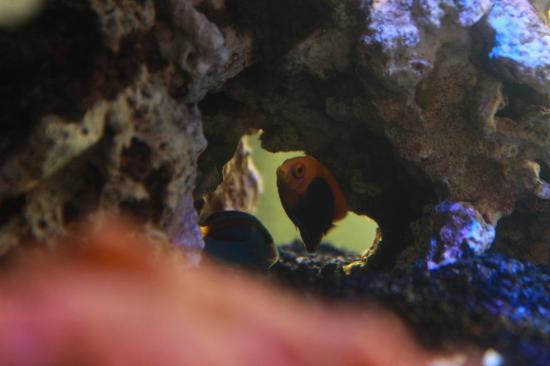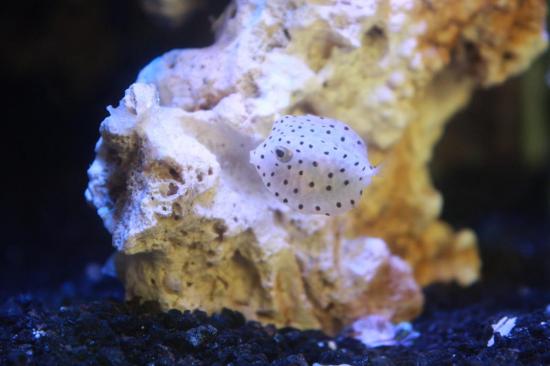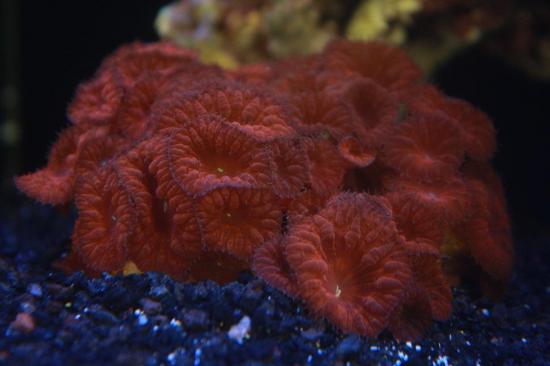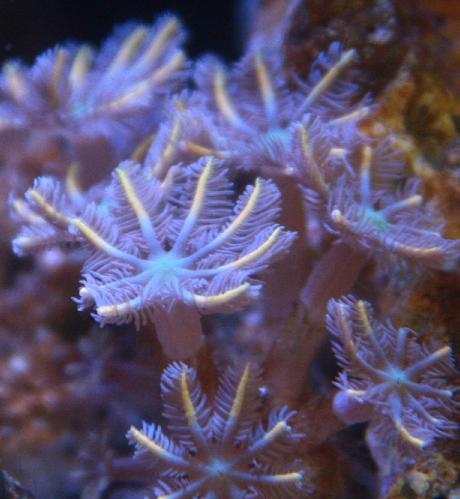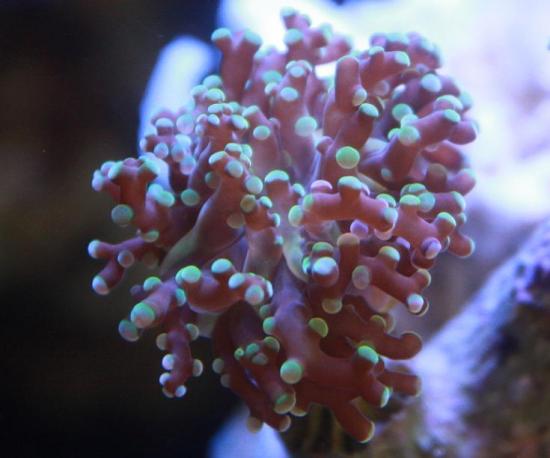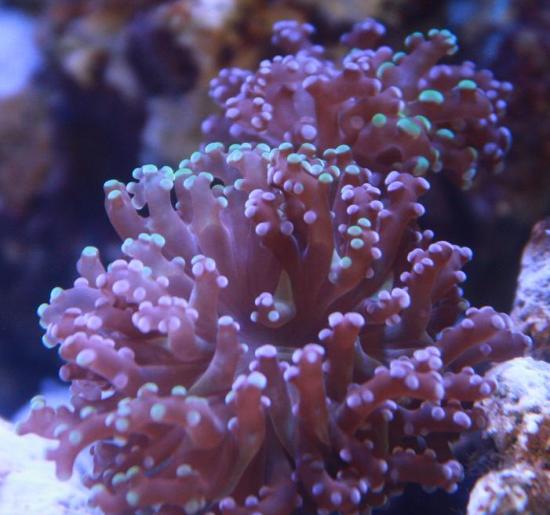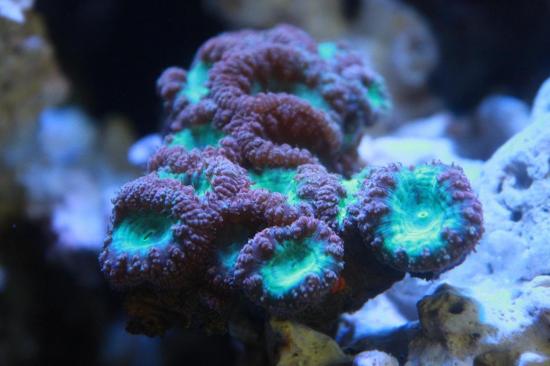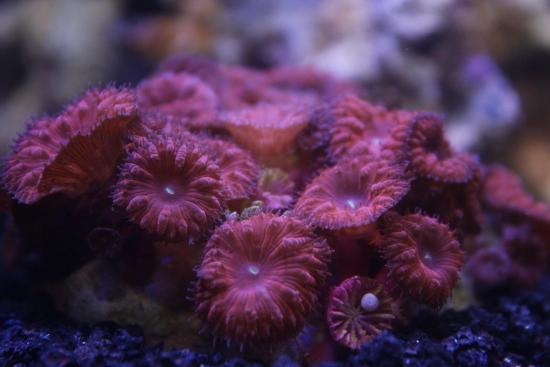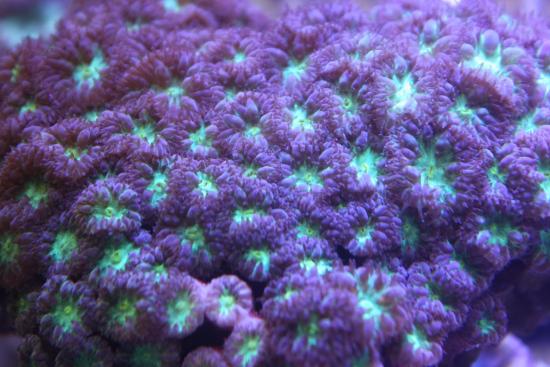The above is a Blastomussa Merletti. Below article taken from : http://www.thesea.or...sa_merletti.htm
Blastomussa Merletti Origins
It is not uncommon to hear the blastomussa merletti referred to as Pineapple Coral, Branched Cup Coral, or Blasto. In its natural environment, the blastomussa merletti can be spotted up and down the wide reefs of the Indo Pacific oceans.
Physical Appearance of Blastomussa Merletti
The polyps of the blastomussa merletti are extremely large and wide (up to 5" in diameter), and emerge from the body of the coral through individual tubular stems. These stems are not often seen, since the polyps sheer size cover them when opened to their full ability. The majority of blastomussa merlettis are usually red, green or brown in coloring.
Blastomussa Merletti in Captivity
LPS corals (Large Polyped Stony Corals, of which the blastomussa merletti is a form) are usually captured in the wild as they are generally unsuccessful to propagate in captivity. However, blastomussa merletti are an exception to this rule of thumb, and of the two species of blastomussa (wellsi and merletti), the blastomussa merletti is much easier to maintain in a home tank, since they will grow very quickly and easily given the right conditions.
Home enthusiasts love watching blastomussa merlettis under the actnic lighting of an aquarium, as its neon centers light up in glowing shades of green. Take caution when adjusting the lighting of a reef tank, as blastomussa merlettis do not thrive under intense lighting conditions. Instead, the light should be adjusted to a dim or moderate level if at all possible. Blastomussa merletti will do best if placed at the bottom of a tank, with average water motion. If the lighting in the home tank is not ideal, the merletti will need to be moved to the middle of the tank where it can access the weaker lighting.
Photosynthetic Nature of Blastomussa Merletti
Many corals develop a symbiotic relationship with hard working algae- offering them a place to live in exchange for the energy they produce during photosynthesis. The blastomussa merletti is one of coral, keeping zooxanthellae underneath their surface that will allow them to survive without any supplemental food sources if necessary. The tentacles and polyps on a blastomussa merletti do work to snag and consume organic matters, or drag larger organisms through its sticky, mucus-lined flesh. If maintained in a reef aquarium, hobbyists have had success offering the blastomussa merletti small meaty portions of baby brine shrimp, fish, and squid. The portion sizes should be in line with the polyp's ability to fully ingest it.
Propagating Blastomussa Merletti
If the blastomussa merletti is attempted to propagate in a home environment, it must be done on healthy, mid sized colonies. The skeleton of the blastomussa merletti can be chipped off from the base into segments containing one or more polyps on each piece. Reproduction will continue asexually, as is practiced in the wild



